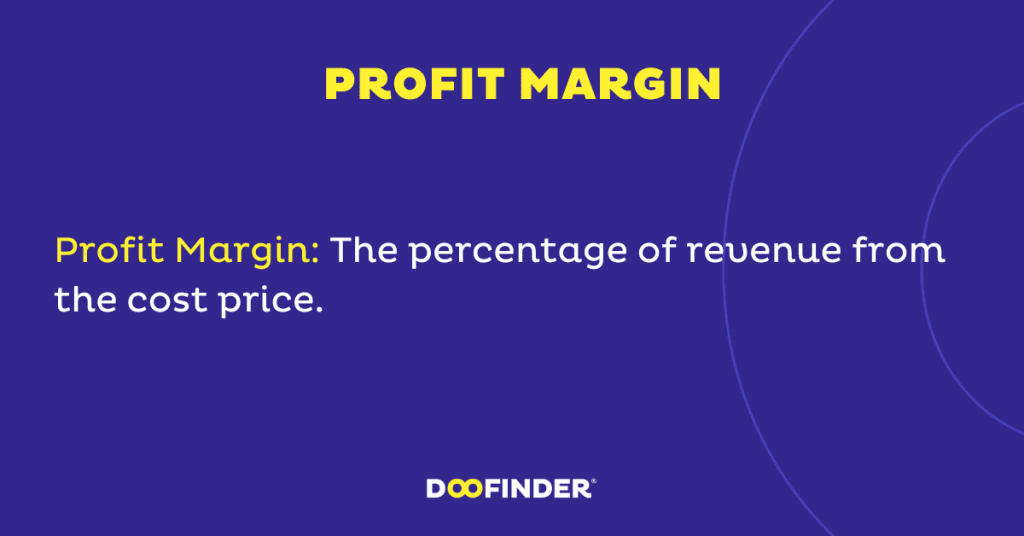When it comes to setting a selling price, there’s a lot that comes into play. It’s important to get it right to ensure that you’re attracting the right customers and increasing your conversions.
The selling price of your products should be a happy medium between satisfying your customers and making a profitable business transaction.
I’m here to explain everything you need to know about finding the selling price of your products. We’ll go over the formulas, calculations, and every factor you need to consider when setting the price for your products.
You can follow along by downloading our FREE selling price calculator for various pricing models and strategies.
Let’s get started!
Table of Contents
What is Selling Price?

Selling price, also known as market, standard, or list price, is the amount of money that a customer pays for a product or service.
Not to be confused with cost price, the selling price can change based on negotiations between the buyer and the seller. Other factors that can influence the price are market competition and price comparison.
Businesses usually decide the selling price of a good or service by analyzing the following aspects:
- Current competitor prices in the market
- The buyer’s spending budget
- The seller’s acceptance price flexibility
Of course, the factors that your business focuses on will depend on your business goals, the product or service that you sell, and the industry that you’re in.
For example, if your business has a high-demand brand image, there’s a possibility that you’ll be able to sell your product for a higher price. This is especially common in the clothing industry for both physical and online stores.
When finding the selling price of a product, it’s important to take these factors into account to properly price your product. If you calculate product price correctly, the customer and seller will both be happy with the price of the product.
What is Average Selling Price?
Average selling price, also known as ASP, is the price set for a good or service on all markets and sales channels. In other words, this is the price that your customers pay for a product. The average selling price can often change based on factors such as the product’s life cycle and the product type.
Knowing the average selling price can be helpful to understand trends or make predictions about the market for your products. You can use the average selling price of your products to determine the best pricing strategy for your business.
Selling Price Formula

The selling price formula is quite simple.
You need to know the cost price of your product – remember this is the price that your business pays for the products before selling them to your customers.
You’ll take the cost price and add it to the profit margin percentage multiplied by the cost price.
How to Find Selling Price

Let’s take a look at an example of how you can use the selling price formula to find the selling price of your product.
Let’s say that you own an online clothing store and you just bought some new t-shirts to sell in your online shop.
Here we have the cost price of the product and the desired profit margin. Now, we just need to plug these numbers into the formula.
- Cost price: $15
- Profit margin: 40% (0.4)
Selling Price = Cost Price + (Profit Margin % x Cost Price)
Selling Price = $15 + (0.4 x $15)
Selling Price = $15 + $6
Selling Price = $21
See, it’s really not too difficult. The t-shirts should be sold for $21 to achieve a 40% profit margin on each sale.
If you own a business where you are hand making products, be sure to include the cost of materials and the time spent making the product for the cost price.
The part that can change depending on your business goals is the profit margin.
This can be determined by looking at a few different factors:
- Product value/demand
- Competitor prices
- Marketing strategy
Average Selling Price Formula
The average selling price formula is even easier to understand than the selling price formula.
All you need to know is the total revenue earned from a product and the number of products sold.
You just have to divide the total revenue by the number of products sold, and then you’ll know the average selling price of your product.
How to Calculate Average Selling Price
Now we have some numbers for the total revenue earned and the number of products sold. Once you have this information, getting the answer is simple!
Here’s an example of how you would calculate the average selling price of your product.
- Total revenue earned: $2,200
- Number of products sold: 100
Now let’s add these numbers into our formula!
Average Selling Price = $2,000 / 100
Average Selling Price = $20
How to Find Selling Price Per Unit
If your business buys products from a manufacturer in bulk, you might need to calculate the selling price per unit. First, you’ll need to find the cost price for one unit. You can do this by finding the total cost of the units purchased and dividing that by the number of units purchased. This will give you the cost per unit.
After that, you’ll use the selling price formula to calculate product price.
- Total cost of units purchased: $3,000
- Number of units purchased: 200
- Cost price: $15 ($3,000/200)
Now we just need to use the selling price formula and choose our profit margin. Let’s see what the selling price will be if we choose a 25% profit margin this time!
Selling Price = Cost Price + (Profit Margin % x Cost Price)
Selling Price = $15 + (0.25 x $15)
Selling Price = $15 + $3.75
Selling Price = $18.75
There you have it! Now you can see how easy it is to change the formula to align with the needs of your specific business plan and products.
Average Sale Price Strategy
After calculating your average selling price, you can actually use it to determine some pretty important things about your business.
- Market Trends
You can easily find out a business’s pricing strategy by looking at some of their sales data and calculating the average sale price. Not only will you know the average sale price, but you can also compare the average sale price and amount of products sold for each year.
For example, a company could have sold their products at a higher price in 2020, but only sold 200 units. When looking at the sales data for the next year, you could see that they sold 400 units, but at a slightly lower price.
This type of selling price trend could be extremely important for a company looking to launch a similar product.
- Market Research
Learning the average selling price can be extremely helpful for new businesses entering the market. Doing average sale price research for competitors can help you understand where you’ll fall in terms of pricing.
If you sell a luxury product, you can look at the average selling price of luxury brands in your industry. This is a great way to determine the selling price for products in a new company.
- Product Insight
Looking at your own company’s average selling price data can also be beneficial when making important decisions about your products. Is it worth it to continue carrying a product that has a low average selling price and low purchase rate? Probably not. This can be a great practice to use when you want to do some product catalog management.
Selling Price Tips
Pricing products properly is really an art. It takes time, research, and calculations among many other things. It can be a make-or-break for your business, so take our advice! We want to help you price your products perfectly!
- Approach your pricing by taking many factors into consideration, not just what your competitors are offering.
- Try new things. You’re allowed to experiment with offering different pricing plans and models for your business.
- Focus on customer satisfaction when pricing your products. Remember, the right price will make both the customer and the seller happy.
- Track data and eCommerce analytics from your pricing to stay ahead of the game by predicting market trends and changes.
- Choose a pricing strategy, and follow it! It’s important to have consistency in your pricing.
FREE Selling Price Calculator
To help you make these selling price calculations even easier, download our FREE Google Sheets or Excel Spreadsheet selling price calculator.
We have calculators available for many different pricing models and strategies such as: competition-based pricing, cost-plus pricing, freemium pricing, hourly pricing, skimming pricing, penetration pricing, premium pricing, project-based pricing, and value-based pricing.
I’m sure you’ll find this selling price calculator useful for your business regardless of which pricing strategy you use.
It could even be helpful if you’re looking to change your pricing model or add a new one into your business! 😉













